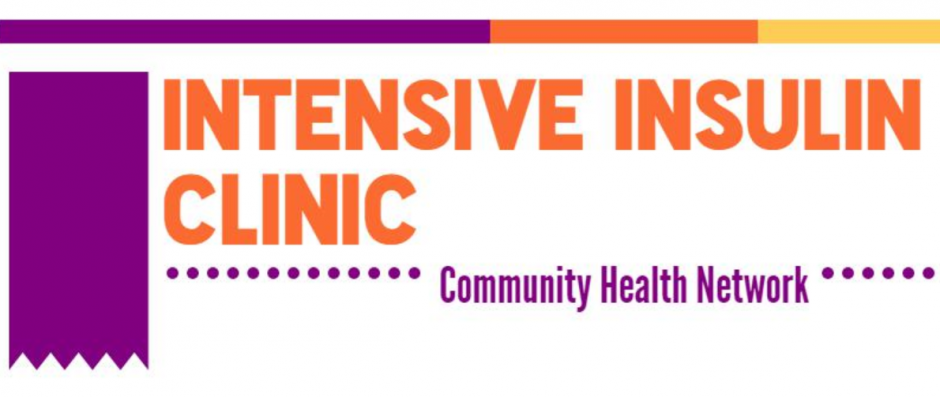
According to a study reported by the American Diabetes Association, the total cost of diabetes was estimated at $245 billion in 2012, which includes $176 billion in direct medical costs and $69 billion in reduced productivity. Of those costs, hospital inpatient care was cited as the number one expenditure.[1]
Cost Avoidance
Our goal in incorporating a clinical pharmacist in Community Health Network’s endocrinology clinic is to assist those patients requiring intensive insulin therapy and prevent some of these costs. The Centers for Medicare and Medicaid Services defines intensive therapy as that requiring frequent injections of insulin, usually four times per day, or continuous insulin infusion.[2] Most hospitalizations seen in this patient population are a result of insulin-related hypoglycemia and errors (IHE).[3] As such, appropriate insulin therapy targeted at preventing hypoglycemia while maintaining proper blood glucose control could lead to significant cost avoidance in this population.
One study looking to demonstrate the effects of device intervention on the incidence of hypoglycemia showed a 72% reduction in severe hypoglycemic events and a 32% reduction in non-severe events. This translated to a direct medical costs savings of $45 million/10 million patients ($4.5 million/patient).[4]
Another study, utilizing a national adverse drug event surveillance program, reported almost 100,000 cases of emergency department visits associated with insulin-related hypoglycemia and errors annually over a 5 year period, one-third of which further resulted in patient hospitalization. Of those cases reported, 22% were as the result of taking the wrong insulin product and 12% were due to patient’s taking an incorrect dose. Based on prior cost estimates, the study predicted a $600 million expenditure to have resulted from these findings.[5] Pharmacists can play a key role in providing proper education to diabetic patients in understanding their insulin regimen and preventing such errors from occurring.
In order to demonstrate the benefits in utilizing concentrated insulin for select patients, a study was completed which highlighted the cost savings of U500 insulin compared to high-dose U100 insulin. The U500 group revealed a decrease in pharmacy costs by $1300 annually, while the U100 group showed an increase in pharmacy costs by about $2,600 annually. Although the U500 group experienced an increased incidence of hypoglycemic events, pharmacist intervention could be utilized to decrease this risk.[6]
Direct Revenue
In addition to the cost avoidance provided by the Intensive Insulin Clinic, direct revenue will also be attained through an incident-to model billing. Based on a year-end goal of 1200 patient visits, we assumed our monthly visit frequency to be about 100 patients for the first year. Accounting for this direct patient care time and added project or non-productive time, we calculated the pharmacist FTE to be 0.61. With an average wage of $65/hour plus 30% benefits, the pharmacist salary per month would be $8,865.74. Although a new pharmacist would need to be hired to fill this position, the endocrine clinic’s administrative and technical support staff could be utilized at no additional cost. Since all office supplies, operating expenses and overhead costs are covered by the clinic, initial start-up costs are minimal, leaving only the pharmacist salary as the main monthly expenditure.
Considering the current payer contracts the endocrinology clinic utilizes, we assumed a payer mix that was also representative of the patient population which we would be treating. As such, our reimbursement model is based on a division of 40% Medicare and 60% commercial insurance. The details of our reimbursement model can be found here: Financial Projections Summary. In addition to the incident-to billing, patients utilizing continuous blood glucose monitoring (CBGM) present an additional opportunity to bill for our services.[7],[8] Since CBGM is indicated for many of the patients referred to us as an intensive insulin clinic, we assumed that 55% of our patient population would utilize this service.

Based on the reimbursement values provided in the Financial Projections Summary, and taking into account an assumed 40% no-show rate for patient appointments, our monthly revenue was calculated to be about $9,316.44 per month. Our profit and loss statement for the initiation of our clinic is therefore represented by the following:
| Month 1 | Month 2 | Month 3 | |
| Net revenue | $9,316.44 | $9,316.44 | $9,316.44 |
| Total costs | $9,755.74 | $8,865.74 | $8,865.74 |
| Net income | ($439.30) | $450.70 | $450.70 |
| Cumulative profit | ($439.30) | $11.40 | $462.10 |
By this prediction, our clinic is expected to break even after the second month, assuming the pharmacist can maximize his/her schedule with 8 patient appointments per day. However, these values may depend on the timeliness of referrals received by the clinic’s endocrinologists.
References:

